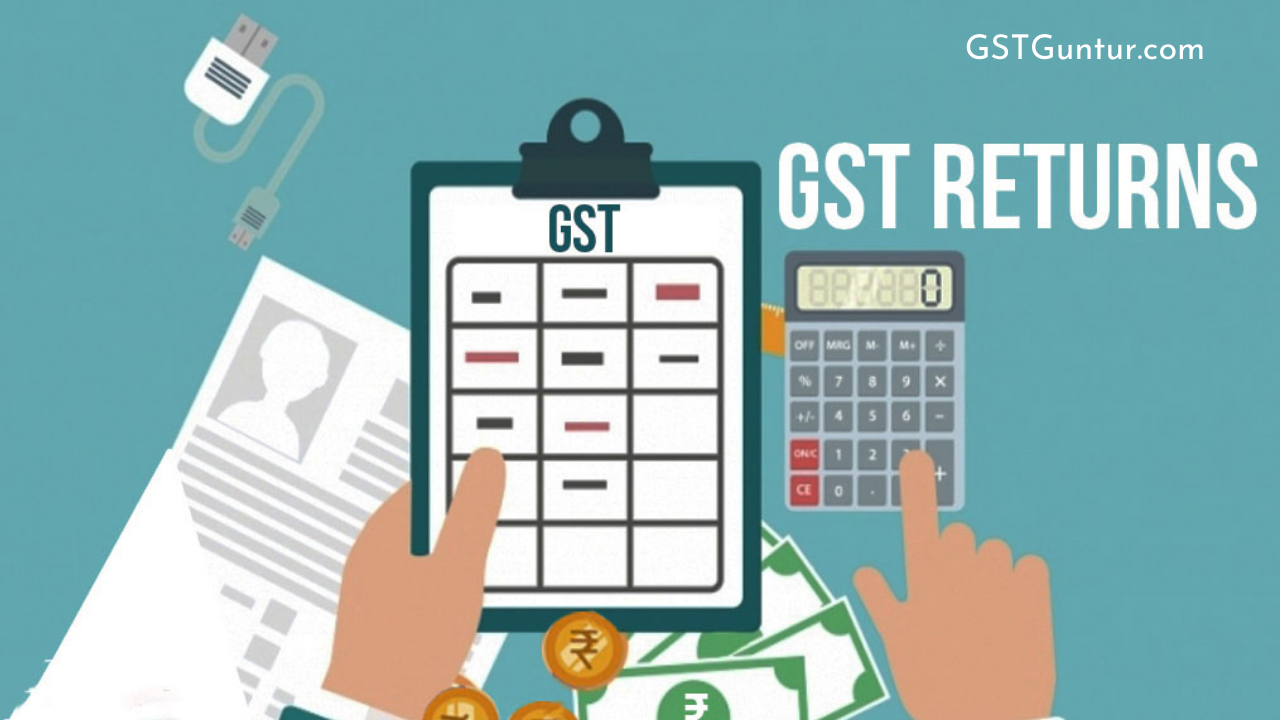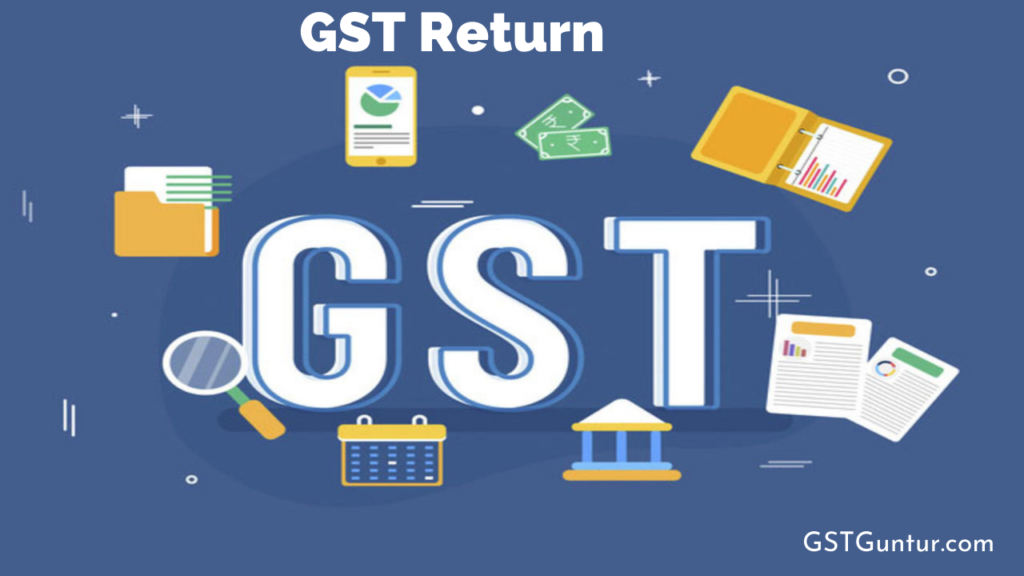GST Return: Everyone registered in GST has to file the specified returns or an electronic return every calendar month. The word ‘tax return’ represents a document that shows the income of a registered taxpayer. That document should be filed with the tax authority to pay the tax to the Government. The tax that one needs to pay depends upon the income they declared in the tax return filed with the taxation department’s authorities. People need to file the tax even if there is no transaction in a particular month.
Under the initial GST return filing process, different GST returns tax officials can demand that the taxpayer disclose the following details.
- Outward supplies or sales
- Inward supplies or purchases
- GST on output
- GST on input
The returns that a regular person has to file in the standard scheme are as follows.
- GSTR- 1
- GSTR- 2A: Read-only Document
- GSTR – 2B
- GSTR – 2
- GSTR- 3B: Summary of Inward Supplies
- GSTR- 4: Return for The Composition of Dealers
- GSTR- 5: Tax Return for Non-Residential Person
- GSTR- 6: Return for the input of Service Distributors
- GSTR- 7: Returns for Taxpayers Deducting TDS
- GSTR- 9: Annual Return for Normal Registered Taxpayer Under GST
- Revised Returns
- Penalty for Filing Late Returns
GSTR- 1
People with turnover in the preceding financial year with more than Rs 1.5 crore or those who have chosen this option voluntarily need to file this.
They can file it monthly by the 11th of the preceding month if they have not chosen the QRMP scheme.
People can file it quarterly by the 13th of the month following each quarter if the business has opted for the QRMP scheme.
It is the return that people should furnish for reporting details of all outward supplies of goods and services. Hence, it contains all the invoices and debit card notes raised on the sales transactions for a given tax period. If there are any amendments to sales invoices made concerning the previous tax periods, all the suppliers and sellers have to report it in this return.
GSTR- 2A: Read-only Document
It is a view-only and dynamic GST return that is relevant for the recipient or the buyer of goods and services. It contains all the details of inward supplies of goods and services or the purchases made from the GST register by suppliers during a taxation period.
The GST return data is auto-populated based on the data filed by the respective suppliers in their GSTR- 1 returns. Again, the data filed in the invoice furnishing facility or IIF by the QRMP taxpayer can also get auto-filed.
It is a read-only return, and hence taxpayers can take no action in it. The buyers can claim a valid Input Tax Credit (ITC) for each financial year across multiple tax periods. If any invoices are missing, the buyer can communicate with the seller to upload them in their GSTR- 1 return on a timely basis.
GSTR – 2B
It is also a view-only and static GST return import for the recipient or the buyer of the goods and services. It is available from August 2020 every month and contains constant ITC data for a period that is checked back.
The ITC details will cover from the date of filing GSTR- 1 for the preceding month or M-1 till the date of filing GSTR-1 for the current month. The return is available on the 12th of every month that gives sufficient time before filing GSTR- 3B.
It provides the action to be taken against every invoice that can be reported. Such reports include data to reverse charge, reference to the table numbers in GSTR- 3B.
GSTR – 2
It is a suspended GST return that registered buyers can use to report the inward supplies of goods and services or the purchases made during the tax period.
The GST return in this has to be auto-populated from GSTR- 2A and can also be edited. All ordinary taxpayers should file it under GST. But it is currently in suspension since September 2017.

GSTR- 3B: Summary of Inward Supplies
GSTR- 3B (till December 2019) It can be filed monthly by the 20th of the following month. (From January 2020) It can be filed monthly by the 20th, 22nd and 24th of the following month.
The taxpayers who have to file the GST return on the 22nd of the month following the quarter are the following states’ residents.
- Chhattisgarh
- Madhya Pradesh
- Gujrat
- Maharashtra
- Karnataka
- Goa
- Kerala
- Tamil Nadu
- Telangana or Andhra Pradesh
- Union territories of Daman and Diu
- Dadra and Nagar Haveli
- Puducherry
- Andaman and Nicobar islands
- Lakshadweep
The taxpayers under the following states have to file the GST return by the 24th of the month following the quarter.
- Himachal Pradesh
- Punjab
- Uttarakhand
- Haryana
- Rajasthan
- Uttar Pradesh
- Bihar
- Sikkim
- Arunachal Pradesh
- Nagaland
- Manipur
- Mizoram
- Tripura
- Meghalaya
- Assam
- West Bengal
- Jharkhand
- Odisha
- Union territories of Jammu and Kashmir
- Ladakh
- Chandigarh
- New Delhi
GSTR- 4: Return for The Composition of Dealers
It is a quarterly return that a registered taxpayer can file with the Composition Scheme. Under the scheme, small taxpayers with a turnover of up to Rs. 1.5 crores can pay tax at a fixed rate to file quarterly return. It is different from the GSTR- 1, GSTR- 2, and GSTR- 3B GST returns. It is due on the 18th of the month following the quarter for a return.
GSTR- 5: Tax Return for Non-Residential Person
Every non-resident taxable person can file it monthly, including inward supplies, outward supplies, interest, penalty fees, and any other payable under the scheme. Hence, a non-resident does not need to file any other return or other annual returns as well.
The due date for this is within 20 days after the end of the month or seven days after the last date of registration validity.
GSTR- 6: Return for the input of Service Distributors
It is a monthly GST return that an input service distributor can file every month. It provides information on all the invoices with credits that they have received and the ISD has issued. It summarises the total input of tax credit that is available for distribution during a calendar month. The details in the invoices that ISD forms in this return are available to every recipient of credit. The details are visible in part B of form GSTR- 2A.
Taxpayers can file it by the 13th of the month succeeding the month for tax payment.
GSTR- 7: Returns for Taxpayers Deducting TDS
It is a monthly GST return that taxpayers can fill by the deductors required to reduce the TDS under GST. It consists of the following.
- Tax deducted at the source
- Liability for TDS
- TDS refund claim
- Interest, late fees, etc.
Taxpayers should clear it within ten days after the end of the month when it was deducted.
GSTR- 9: Annual Return for Normal Registered Taxpayer Under GST
The annual return is to be filed annually by the 31st of December after the year-end.
The Government has introduced GSTR- 3B to resolve the server issue on the last date. It can be filed from January 2020. According to this new method, the due date for people who have a turnover of more than Rs. 5 crores each month is the 20th of each month. For others, the due date is the 22nd and the 24th based on their state of registration.
Revised Returns
Under the current filing system, GST returns cannot be revised. The mistakes can be rectified in the subsequent return if it comes to notice.
Under the following cases, rectification is not allowed.
- The tax authorities found an error as a result of an audit or inspection.
- There will be no scope for rectification if the due date of return of the month of September or quarter July till September of the following year.
- The error cannot be rectified after the actual date of furnishing a particular year’s annual return.
Penalty for Filing Late Returns
If a taxpayer fails to submit the outward supplies’ details, the authorities will charge a penalty. The fine comes to a sum of Rs. 200 were Rs. 100 is for CGST and Rs. 100 is for SGST for each day of continuing to default. The maximum can surmount to Rs. 5000.
However, there is no penalty for the late filing of IGST. Another interest of 18% per annum is charged. The taxpayer can calculate the interest to calculate the amount of tax liability outstanding. It is calculated from the day succeeding the due date for the GST return until the payment date comes.
